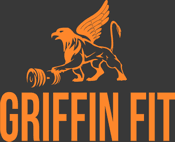Have you reached a plateau with your weight loss?
by Bexi Wood in Training

So, the start of your weight loss journey has been great, you feel healthier, you’re shedding the pounds and dropping dress sizes. However now you feel like you’re stuck you’ve ‘hit the wall’ and feel like you’ve reached plateau. What to do?
As you’re losing weight, it can be tempting to cut calories too low to shed pounds faster. The down side to this is your muscles can be used as energy and this gradually slows your metabolism to spare energy. Here’s 10 ways to overcome weight loss plateau:
- Plan your meals ahead of time – this will put you in a positive mindset for the day as you know what you are eating, you have the food all prepared or ready to go for cooking when you get home. You will also tend to snack less due to sticking to a plan. Fail to prepare – prepare to fail as the saying goes.
- Re visit your goals and set a new plan of action of how you are going to get there!
- Check in regularly with either writing your progress in a diary or if you are a client of ours tracking your progress on our tracking system. This will psychologically help you stick to plan throughout the week.
- Adjust your calorie intake- As you lose weight, your metabolism can drop because your body requires less calories or ‘energy’ to fuel a smaller you. The calorie intake you initially had when you began your weight loss journey will need to be adjusted to match your body’s current needs for weight loss. Revise your calorie goal every 10 pounds.
- Focus on quality- Busting through weight-loss plateau is more than calories in and out. Processed foods won’t cut it anymore, thus quality foods like vegetables, beans, high-fibre fruits and lean proteins are needed for your body to burn fat. Home cooking always wins!!
- Rotate your routine- It’s time to change up your workouts. Muscles become familiar with the same old workout, making your regular routine less effective. To see a change in body fat, you have to get outside of your fitness comfort zone. HIIT has been shown to burn body fat effectively. Make sure you progress slowly and deliberately when incorporating high intensity exercise into your routine. Too much too quick can leave you too sore and injured.
- Sleep- a full nights sleep is vital to losing body fat because it resets your hormones. Even a little sleep deprivation can lead to increased cortisol, a stress hormone. Elevated cortisol levels can lead to body fat accumulation.
- Keep a closer eye on your caloric needs- People often overestimate how many calories they burn during exercise, and underestimate how many calories they eat. To better approximate your calorific intake, work out your Basal Metabolic Rate by using the ‘Schofield equation’ (see below) *
- Flush with fluids- Keep your hydration in check since your body will often crave food when you’re mildly dehydrated. Aim to drink 80-100 fluid ounces of water per day.
- Eat more protein- Protein has the highest thermic effect of food, meaning eating protein burns more calories during digestion.
- Progressive overload- When weight training if you feel you have reached a plateau then you need to progressively overload your body by changing your routine. Add a couple more reps than usual, perform one more set than you normally would. Increase the weight/resistance. Changing this will ‘wake the muscles up’ and you’ll feel the changes in your body.
*The Schofield Equation-
Males-
10-17 years BMR= 17.7 x Weight (KG) +657 SEE=105
19-29 years BMR= 15.1 x Weight (KG) +692 SEE= 156
30-59 years BMR= 11.5 x Weight (KG) + 873 SEE= 167
Females-
10-17 years BMR= 13.4 x Weight (KG) + 692 SEE= 112
18-29 years BMR= 14.8 x Weight (KG) + 487 SEE 120
30-59 years BMR= 8.3 x Weight (KG) + 846 SEE= 112
SEE= standard error of estimation
In addition to calculation BMR you have to apply the individual’s physical activity level (PAL)
Men-
BMR x 1.4 inactive
BMR x 1.7 moderately active
BMR x 1.9 very active
Women-
BMR x 1.4 inactive
BMR x 1.6 moderately active
BMR x 1.8 very active
Work out your BMR and PAL everyday to give you your daily calorific intake.
